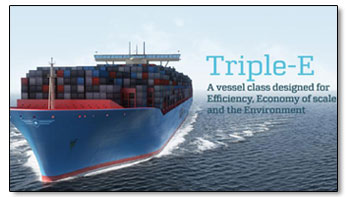|
|
The ‘Slow Boat Exception’by Ari Levaux One of the main reasons to source your foods as close to home as possible is because it cuts down on carbon costs associated with shipping. Eating local is a good rule of thumb, but with rules come exceptions. I call mine the “Slow Boat Exception.” It states that if a food could be transported on an unrefrigerated sailboat, it can be included in a locally oriented meal without a side of guilt. “Slow Boat” is a nod to the wind-powered, unrefrigerated cargo boats upon which global trade once depended. On those vessels, the only things that could be shipped were nonperishables like spice and canned or dry goods. Marco Polo used a slow boat to introduce noodles to Italy from China. Slow boats likewise spread peppers, tomatoes and potatoes from the new world to the old. In other words, global transport played a crucial role in the evolution of many cuisines around the world. And to this day, shipping food long distance can be a very good thing with little downside. If unrefrigerated sailboats were still the norm, many of the carbon-related problems associated with long-distance transport of food would be eliminated. In 2008, French shipper Compagnie de Transport Maritime delivered 30,000 bottles of wine to Dublin on the century-old tall ship Kathleen & May. And while that turned out to be an isolated case, the same principle applies to the gargantuan, slow moving cargo ships currently plying the seas. Sure, these vessels burn fuel, but they carry such massive payloads that the carbon burned per unit of food is negligible compared to other forms of transport, especially if the cargo isn’t refrigerated. A ship dubbed “Triple-E,” launched recently from a South Korean dock, is currently the largest cargo ship in history, capable of carrying 18,000 shipping containers – 2,500 more than the previous biggest holder. The company that commissioned the Triple-E, Danish shipper Maersk, just ordered 20 more. The Triple-E, or any other boat, won’t be making deliveries to Nebraska anytime soon, but that doesn’t mean inland dwellers can’t employ the Slow Boat Exception in their purchasing decisions. The inland equivalent of a slow boat is a train, which is roughly 10 times more fuel efficient than trucks and 100 times more efficient than planes. Consumers usually don’t have any idea whether their food arrives by train, Triple-E, or magic carpet. Still, if you limit your imports to foods that could have been transported efficiently, that edges you closer to the solution side of the carbon-burning spectrum, and away from the problem of consuming things that must be transported quickly and cold. At its core, the Slow Boat Exception isn’t about boats, or even transport. It’s about getting into the habit of considering food choices case by case, guided by principles but grounded in nuance. The carbon costs of transport represent only a small fraction of the carbon costs associated with food, while food production and processing burn the lion’s share – the exact carbon cost varies from food to food. The production of olive oil, for example, involves significantly less fossil fuel than the production of highly processed seed oils like canola or soy. Just as production practices and distances traveled burn varying amounts of carbon, so does the timing of when a product is consumed. While most of the country can’t eat citrus locally, we can all eat it seasonally. And since citrus is in season during winter, refrigeration isn’t needed for its transport. Southern-hemisphere citrus, shipped farther and during our summer, has a higher cost of transport, refrigeration, and in some cases storage. Without being overly obsessive, I lean locally in my food choices. But I have no qualms about supplementing my local foods with exotic ingredients like coconut milk, curry paste, black pepper, Brazil nuts, coffee, tea, chocolate, and many more of the culinary treasures the world has to offer. Early spring can be a challenging time to eat locally, because last summer’s stash is wearing thin and this year’s harvest is months away. But here’s a Slow Boat recipe that works any time of year –especially if you did your homework last summer. Curried eggs with broccoli Prepare a pan with olive oil and/or bacon on medium heat. Fry broccoli florets in the oil/grease. Pour a little water in the pan and cover it, so the broccoli steam-fries. While that’s happening, beat the eggs in a bowl with a fork. Use your fingers to drop pebble-sized chunks of curry paste into the egg mix. When the broccoli is done to your liking, stir in the chopped garlic. Make sure the broccoli is evenly dispersed in the pan, then add the curry-and-egg mixture. Let it cook for about 30 seconds, give it a good stir or two with a spatula, then kill the heat. If the eggs are still too runny for your liking, put the lid back on. The residual heat should finish the job. |


